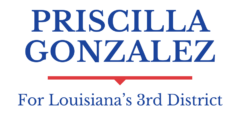The poverty rate of Acadia Parish, Louisiana, is particularly high, indicating a serious socioeconomic issue for the area. According to Census Reporter, over 23.7% of Acadia Parish’s population lives below the poverty line. Meanwhile, the United States Census Bureau’s QuickFacts report an even higher rate of 24.9%. This disparity demonstrates the inconsistency in data reporting while continuously emphasizing the area’s economic challenges.
To put things in perspective, these rates are significantly higher than the state and national norms. Louisiana’s poverty rate is already higher than the national average, at 18.6%. Nationally, the poverty rate is 11.5%, less than half of Acadia Parish’s published estimates. This sharp discrepancy highlights the amount of economic suffering experienced by Acadia Parish citizens when compared to the larger state and national contexts.
Poverty reduction efforts in Acadia Parish are critical for enhancing inhaAcadia Parish’s high poverty rate has a wide range of ramifications. It can have an impact on access to important services such as healthcare, education, and housing.
Furthermore, higher poverty levels are frequently related to higher crime rates, lower educational achievement, and poorer health outcomes. To address this issue, comprehensive methods are required, including economic development initiatives, increased access to education and job training programs, and improved social services to assist people in need. Efforts to alleviate poverty in Acadia Parish are critical for enhancing inhabitants’ quality of life and creating a more prosperous and equitable community.
Potential Solutions to Reduce Poverty in Acadia Parish
- Economic Diversification:
- Encourage the development of various industries beyond agriculture and oil. Initiatives could include attracting technology firms, renewable energy companies, and manufacturing plants. Diversifying the economy can provide more stable and higher-paying job opportunities.
- Education and Job Training:
- Invest in education and vocational training programs. Enhancing the skills of the workforce can make them more competitive for higher-paying jobs. Partnerships with local community colleges and trade schools can be beneficial.
- Small Business Support:
- Provide incentives and support for small business development. This can include grants, low-interest loans, and business development services. Supporting local entrepreneurs can stimulate economic growth and job creation.
- Infrastructure Improvements:
- Improve local infrastructure such as transportation, internet access, and utilities. Better infrastructure can attract businesses and improve the quality of life for residents, making the area more attractive for investment.
- Social Services and Support Programs:
- Strengthen social safety nets and support programs for low-income families. This includes access to healthcare, affordable housing, and food security programs. These services can help alleviate immediate poverty while long-term solutions are implemented.
- Community Development Initiatives:
- Invest in community development projects that improve public spaces, housing, and community services. Such initiatives can boost local morale and create a more attractive environment for businesses and residents alike.
Addressing Acadia Parish’s high poverty rate demands a multidimensional approach that includes economic, educational, and community-based solutions. Economic development measures can generate job possibilities and stimulate local businesses, whilst improved access to education and job training programs can provide citizens with the skills they need to find better jobs. Community-based measures, such as improved social services and support networks, can provide both immediate relief and long-term stability, lowering poverty and boosting inhabitants’ overall quality of life.
